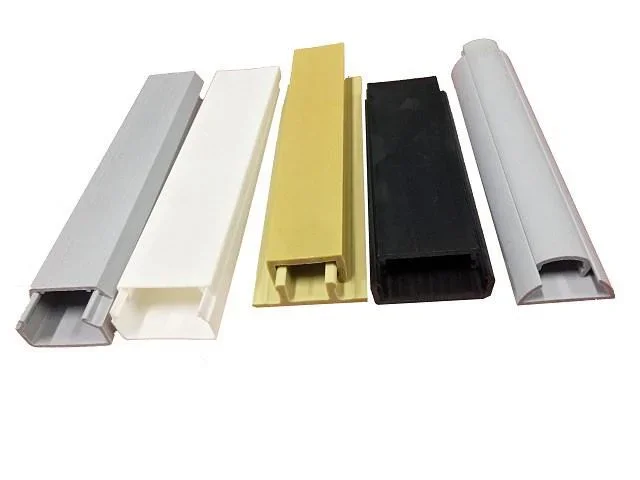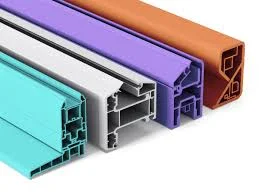PVC (Polyvinyl Chloride) is a widely used thermoplastic material known for its versatility and durability. PVC plastics extruded profiles are essential components in various industries, including construction, automotive, and furniture. In this blog, we will delve into the manufacturing process of PVC plastics extruded profiles, exploring the steps involved and the equipment used.
I. Raw Material Preparation
The first step in the manufacturing process of PVC plastics extruded profiles is the preparation of raw materials. PVC resin, plasticizers, stabilizers, and other additives are carefully selected and mixed in specific proportions. The quality and composition of these raw materials play a crucial role in determining the properties and performance of the final extruded profiles.

II. Mixing and Compounding
Once the raw materials are prepared, they are fed into a high-speed mixer. The mixer blends the materials thoroughly, ensuring a homogeneous mixture. This process is known as compounding and helps in achieving consistent material properties throughout the extruded profiles.
III. Extrusion
After compounding, the PVC material is ready for the extrusion process. Extrusion is the core step in manufacturing PVC plastics extruded profiles. It involves the following sub-steps:
1. Feeding: The compounded PVC material is fed into an extruder, which consists of a hopper and a screw mechanism. The hopper feeds the material into the screw, which transports it towards the extrusion die.
2. Heating and Melting: Inside the extruder, the PVC material is subjected to heat and pressure. The screw mechanism rotates, generating frictional heat that melts the PVC resin. The plasticizers and additives also melt, forming a molten PVC compound.
3. Shaping: The molten PVC compound is forced through a specially designed extrusion die. The die imparts the desired shape and dimensions to the extruded profile. The die can be customized to produce profiles of various sizes, such as pipes, tubes, channels, or custom profiles.
4. Cooling and Sizing: As the extruded profile emerges from the die, it enters a cooling tank or water bath. The cooling process solidifies the molten PVC, ensuring dimensional stability. Sizing tools or vacuum calibration tanks are used to maintain the desired shape and dimensions of the extruded profile.

IV. Cutting and Finishing
Once the extruded profile has cooled and solidified, it undergoes cutting and finishing processes. The extruded profile is cut into desired lengths using saws or other cutting tools. The cut ends are then finished to remove any rough edges or imperfections. Finishing processes may include sanding, buffing, or chamfering, depending on the specific requirements of the profile.
V. Quality Control
Throughout the manufacturing process, strict quality control measures are implemented to ensure the production of high-quality PVC plastics extruded profiles. Quality control checks may include visual inspections, dimensional measurements, and mechanical testing. Any profiles that do not meet the specified quality standards are rejected or reworked.

Conclusion
The manufacturing process of PVC plastics extruded profiles involves several crucial steps, from raw material preparation to quality control. Each step contributes to the production of high-quality profiles with consistent properties and dimensions. Understanding this process helps us appreciate the complexity and precision involved in manufacturing PVC plastics extruded profiles. Whether used in construction, automotive, or furniture applications, PVC plastics extruded profiles continue to play a vital role in various industries worldwide.
Understanding Plastic Extrusion - Extruded Profiles and Their Significance
